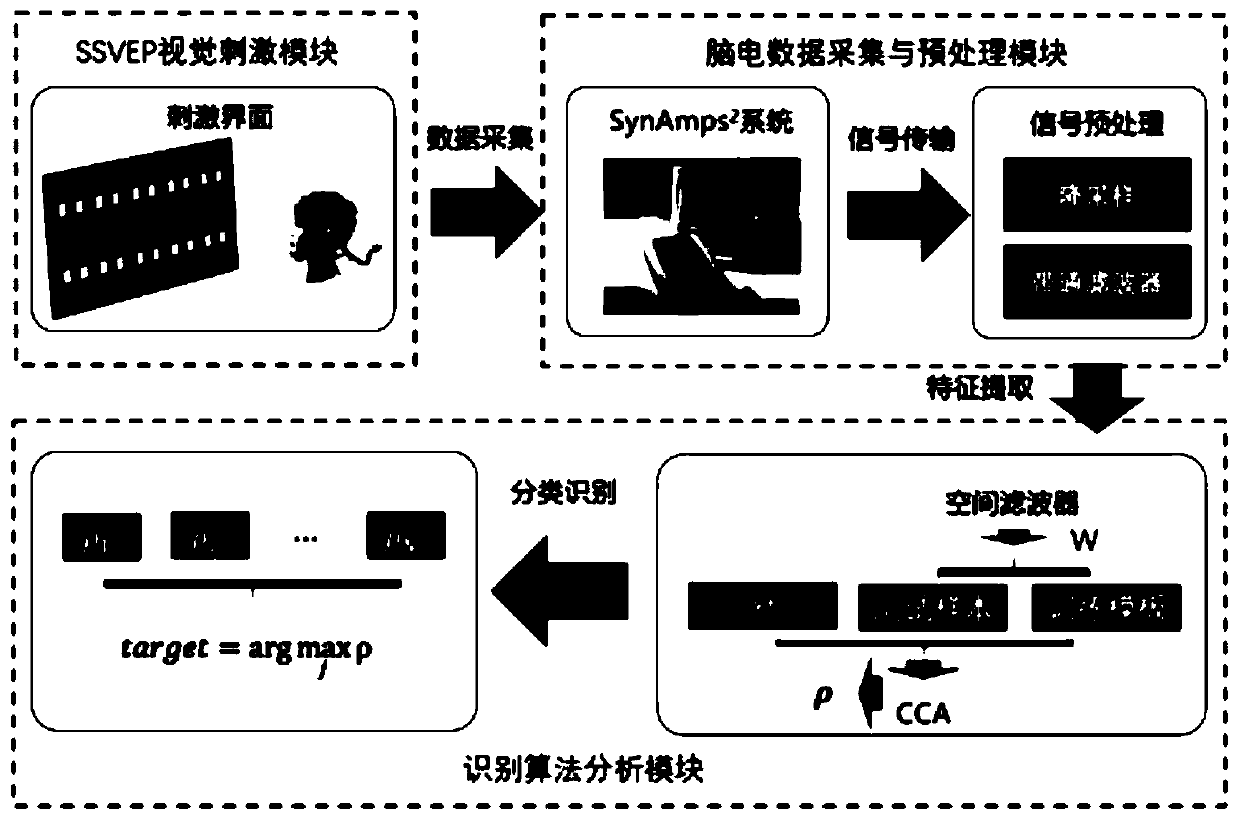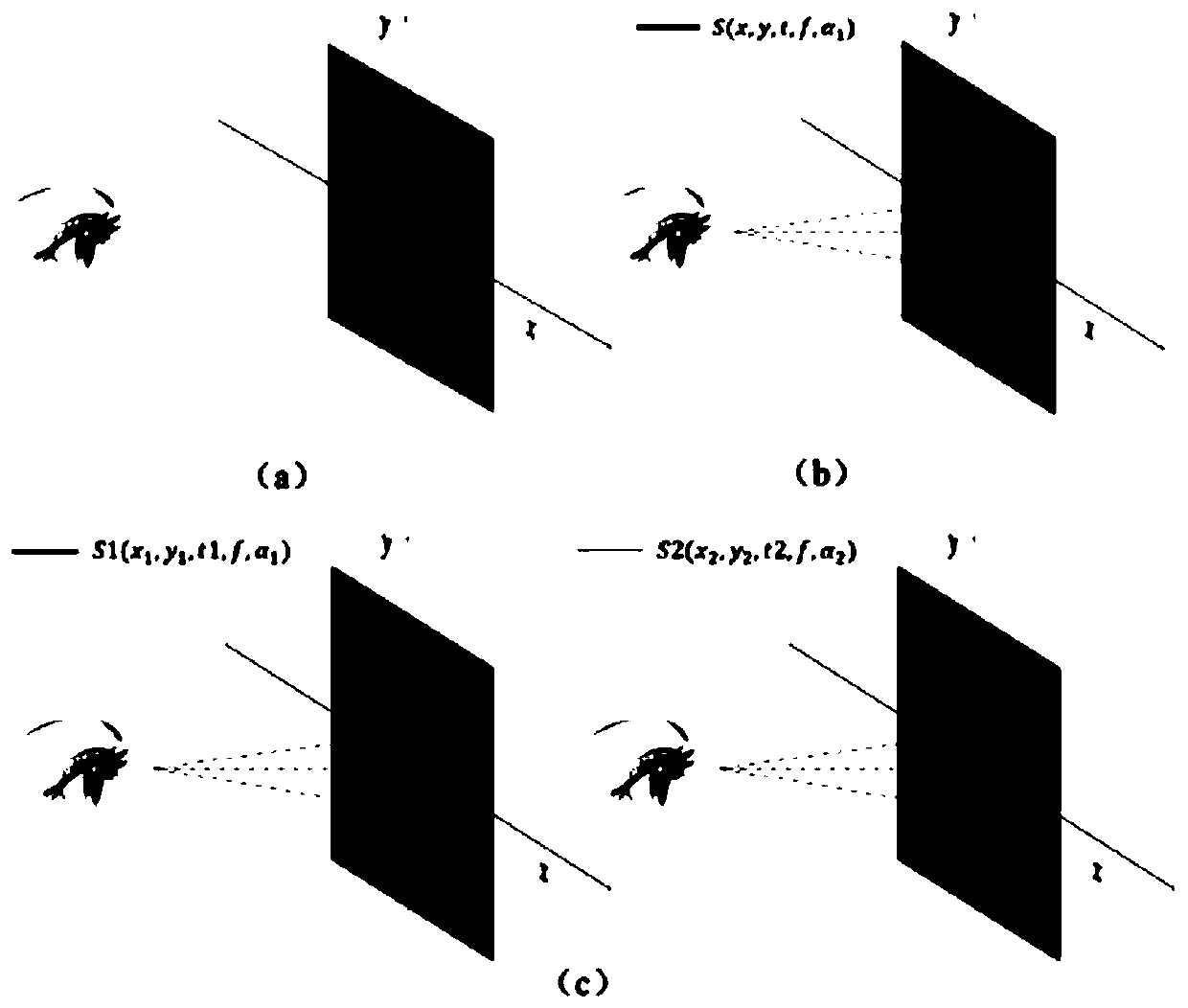Brain-computer interface method based on steady-state asymmetric visual evoked potential
A visual evoked potential and asymmetric technology, applied in the field of brain-computer interface, can solve problems such as difficult to effectively extract and identify targets, affect SSVEP performance, and weak EEG signal amplitude, so as to avoid visual fatigue, improve recognition performance, Effect of suppressing background common mode noise
- Summary
- Abstract
- Description
- Claims
- Application Information
AI Technical Summary
Problems solved by technology
Method used
Image
Examples
Embodiment 1
[0037] According to the spatial asymmetry characteristics of the brain's visual stimulus response, the present invention designs a new asymmetric encoding paradigm based on SSVEP by combining the stability and high decoding performance of the SSVEP system, and develops a coding paradigm suitable for decoding Efficient algorithm for SSaVEP.
[0038] The technical process is: design a new SSaVEP coding paradigm, build a complete EEG signal acquisition device, collect the subject's EEG signal data under the guidance of the experimental system, and then store the EEG data passed through the EEG amplifier, and then carry out Certain preprocessing, feature extraction, and finally identification.
Embodiment 2
[0040] Combine below Figure 1-Figure 5 The scheme in embodiment 1 is further introduced, see the following description for details:
[0041] 1. Visual Stimulus Paradigm Design
[0042] The present invention designs an SSaVEP encoding paradigm with N instruction sets. Taking the character encoding paradigm of four instructions as an example, characters A, B, C, and D are distributed in 2×2, and asterisks indicate the target characters to be gazed at, such as figure 2 shown. The subject's eyes were kept level with the center of the screen (usually at a distance of 70 cm), and the subject stared at the center of the target. At different times, stimulus signals appeared around the visual field, evoking SSaVEP with spatial information.
[0043] like image 3 As shown, a schematic diagram of the spatial distribution of a single instruction is displayed using the xoy coordinate axis. In order to better show the location distribution of asymmetric instructions, in the present in...
PUM
 Login to View More
Login to View More Abstract
Description
Claims
Application Information
 Login to View More
Login to View More - R&D
- Intellectual Property
- Life Sciences
- Materials
- Tech Scout
- Unparalleled Data Quality
- Higher Quality Content
- 60% Fewer Hallucinations
Browse by: Latest US Patents, China's latest patents, Technical Efficacy Thesaurus, Application Domain, Technology Topic, Popular Technical Reports.
© 2025 PatSnap. All rights reserved.Legal|Privacy policy|Modern Slavery Act Transparency Statement|Sitemap|About US| Contact US: help@patsnap.com



